Photo
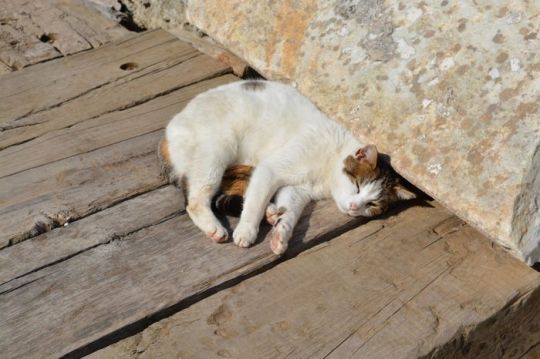
Revealing Turkish Deception An Eye-Opening Experience
A Startling Revelation
My journey through Bulgaria has exposed me to a level of deceit that I never imagined possible. Despite my extensive travels and worldly experiences, nothing prepared me for the depth of human duplicity I encountered here. The Turks possess a remarkable ability to lie with coolness and plausibility that defies belief, leaving even the most skeptical minds deceived.
The Art of Deception
Their lies are delivered with an air of honesty, earnestness, and seriousness that is incredibly convincing. They speak with such conviction, aligning their words with your own beliefs and perceptions, making it seem impossible that they could be wrong. It’s only when you witness firsthand their calculated and shameless lies that you begin to grasp the extent of their deceitfulness City Tours Istanbul.
Blind Trust
In many cases, there is no way to verify the truth, leaving you no choice but to believe. It requires a unique mindset to distrust every word spoken, a mindset rarely found among Europeans who are continually deceived in their dealings with Orientals.
Personal Vulnerability
Even I, the writer of these lines, confess to being vulnerable to their manipulations. I realize that any Turk, like the Mutld-Serif of Philippopolis, could easily convince me of falsehoods unless I have tangible evidence to the contrary. I feel like a naive child in their hands, unable to doubt their words until confronted with undeniable proof.
Betrayal of Trust
The Turks’ actions further expose their deceitfulness. Upon learning of our visit to Perustitza, they swiftly relocated the villagers’ cattle to prevent us from intervening, callously disregarding their plight and selling off their livestock.
My experience in Bulgaria has shattered any illusions of trust and honesty I once held. The Turkish art of deception is a sobering reality that demands caution and skepticism in all dealings with them.
0 notes
Photo
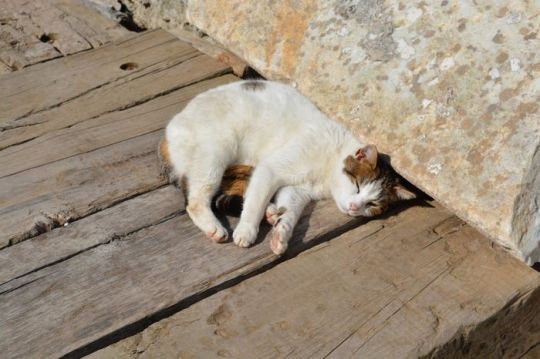
Historical Practices in Treasury Management
The tradition of sealing Treasury doors was believed to have persisted until the time of Sultan Murat II.
Importance of Treasury Register Books
During Sultan Mehmet IV’s reign, significant emphasis was placed on Treasury register books. This focus stemmed from a notable incident following the death of Superintendent of the Treasury, Mermer Mehmet Pasha, who had been promoted to the Kubbealti vizierate. A substantial quantity of jewels and valuable goods belonging to the Treasury were discovered among his possessions.
Rise of Heritage Seizing
The practice of seizing heritage became more common from 1679 A.D., eventually becoming a primary source of income for the Imperial Treasury. However, Sultan Mahmut II later abolished this practice Private Istanbul Tours.
Distinction Between Heritage and Confiscation
While both heritage seizure and confiscation contributed to the Treasury’s income, they differed in nature. Heritage seizure involved acquiring the property of individuals who died naturally, whereas confiscation targeted the assets of individuals like Vizier Hasan, who had been executed.
Contributions from Foreign Envoys
During Sultan Mehmet IV’s reign, gifts from foreign envoys significantly enriched the Treasury. For instance, the French envoy presented ninety purses of jewelry and thirty purses of assorted gifts, while the envoy from the Tsar in Moscow arrived with one thousand one hundred ninety-eight sable furs and various other items.
Tradition of Gifting to the Treasury
Gifts presented to the Sultan by the Valide Sultan (queen mother), the Grand Vizier, and other high-ranking officials as tokens of congratulations were also directed to the Imperial Treasury, continuing a longstanding tradition within the empire.
0 notes
Photo

Historical Practices in Treasury Management
The tradition of sealing Treasury doors was believed to have persisted until the time of Sultan Murat II.
Importance of Treasury Register Books
During Sultan Mehmet IV’s reign, significant emphasis was placed on Treasury register books. This focus stemmed from a notable incident following the death of Superintendent of the Treasury, Mermer Mehmet Pasha, who had been promoted to the Kubbealti vizierate. A substantial quantity of jewels and valuable goods belonging to the Treasury were discovered among his possessions.
Rise of Heritage Seizing
The practice of seizing heritage became more common from 1679 A.D., eventually becoming a primary source of income for the Imperial Treasury. However, Sultan Mahmut II later abolished this practice Private Istanbul Tours.
Distinction Between Heritage and Confiscation
While both heritage seizure and confiscation contributed to the Treasury’s income, they differed in nature. Heritage seizure involved acquiring the property of individuals who died naturally, whereas confiscation targeted the assets of individuals like Vizier Hasan, who had been executed.
Contributions from Foreign Envoys
During Sultan Mehmet IV’s reign, gifts from foreign envoys significantly enriched the Treasury. For instance, the French envoy presented ninety purses of jewelry and thirty purses of assorted gifts, while the envoy from the Tsar in Moscow arrived with one thousand one hundred ninety-eight sable furs and various other items.
Tradition of Gifting to the Treasury
Gifts presented to the Sultan by the Valide Sultan (queen mother), the Grand Vizier, and other high-ranking officials as tokens of congratulations were also directed to the Imperial Treasury, continuing a longstanding tradition within the empire.
0 notes
Photo
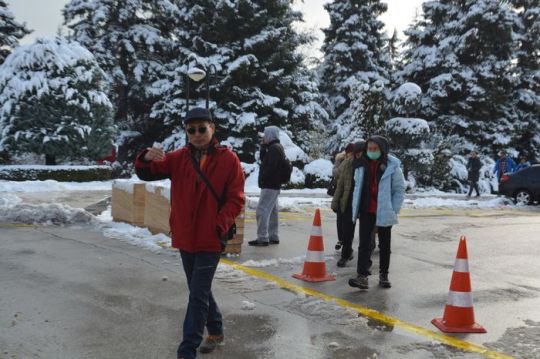
The Grim Aftermath
As we ventured deeper into the village, we were confronted with the chilling evidence of the massacre’s aftermath.
A River of Death
Beneath us, the wheel-pit served as a macabre grave, its waters teeming with lifeless bodies. The stream’s banks, once strewn with corpses, bore witness to the gruesome fate of men, women, and children left to decay under the merciless sun.
Nature’s Grim Mercy
Yet, nature intervened—a torrential rainstorm descended, swelling the stream and carrying the bodies downstream. From Pestera to Tatar Bazardjik, forty miles away, the grim remnants of the massacre were scattered far and wide, concealed beneath the underbrush and shaded woods.
A Churchyard of Sorrow
Entering the churchyard, we were met with an overpowering stench—a poignant reminder of the tragedy that befell this once-sacred ground. Holding tobacco to our noses, we pressed on, determined to uncover the truth.
Uncovering the Horror
Within the confines of the churchyard, a grisly sight awaited us—an immense heap of human bodies, concealed beneath layers of stones and rubble. The entire area was transformed into a mass grave, the putrid odor emanating from the decaying remains Tour Packages Balkan.
Failed Attempts at Burial
Weeks after the massacre, attempts were made to bury the dead, but the stench proved unbearable. Men tasked with the grim duty could not bear to stay, hastily burying a few bodies while covering others with scant earth. In the churchyard, their efforts to conceal the horrific scene with stones and debris were only partially successful.
The scene before us bore witness to the unimaginable horrors endured by the villagers of Batak. Despite efforts to bury the dead and obscure the grim reality, the lingering stench and haunting remnants served as a sobering reminder of the brutality inflicted upon the innocent.
0 notes
Photo

Unveiling Historical Landmarks Churches of Significance
The Church of “Sveti Dimitur” Birthplace of Bulgarian Resistance
Dating back to the Asenevstsi dynasty in the early 12th century, the Church of “Sveti Dimitur” holds special significance in Bulgarian history. It was established by brothers Asen and Petur and served as the focal point for the uprising against Byzantine rule. The church, depicted in the Plan of the Church “Sveti Dimitur,” showcases original construction from 1185, with later additions in the 13th century.
The Church “Sveti Chetiredesete Muchenici” Commemorating Victory
Situated on the left bank of the river, at the foot of the western side of Tsaravets hill, the Church “Sveti Chetiredesete Muchenici” holds deep historical significance. Built to commemorate the victory at the battle of Klokotnitsa on March 9, 1230, where Tzar Ivan Asen the Second triumphed over Kir Teodor Komnin. Legend has it that the church was dedicated to the Forty Martyrs, whose aid was believed to have secured victory.
Inside the Church Testament to History
Within the church lie six columns, three bearing inscriptions detailing the region’s history. These include references to Khan Krum of Bulgaria, Khan Omurtag, and Tzar Ivan the Second, celebrating Bulgaria’s expansion “to the three seas – Black Sea, Marmara, and Mediterranean.” Additionally, the church serves as a repository for regional relics, including the burial site of Tzar Ivan the Second and his wife Irina within the south wall Private Turkey Tours.
The Monastery of “Velikata Lavra” A Center of Spiritual Life
Established in the mid-13th century around the Church “Sveti Chetiredesete Muchenici,” the monastery of “Velikata Lavra” played a crucial role in the spiritual landscape of Turnovo. Excavations from 1973 to 1985 unearthed the east wing of the monastery, containing the refectory and Abbot’s quarters, alongside remnants of the west and south wings. These discoveries offer insights into the daily life and rituals of the monks who once inhabited this sacred space.
0 notes
Photo
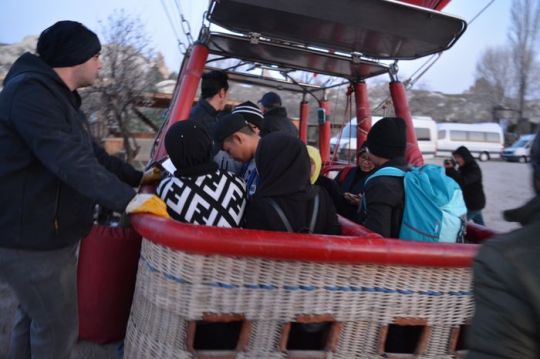
The Second Bulgarian Kingdom
Rise, Struggles, and Fall
Byzantine Domination (1014-1186)
Bulgaria endured Byzantine rule from 1014 to 1186. The Byzantine emperors imposed the Greek language on Bulgaria in an attempt to absorb it as a Byzantine province. However, the strong Bulgarian national identity resisted being overshadowed. Despite several uprisings, the Bulgarians remained under Byzantine control until 1186.
Liberation and Leadership of the Asen Brothers (1186)
In 1186, Bulgaria liberated itself from Byzantine rule under the leadership of brothers Peter and Ivan Asen. Peter became the king and prioritized reestablishing the independence of the Bulgarian church, restoring Bulgarian as the religious and literary language instead of Greek. Although Peter was killed in 1196 after a significant victory over the Greeks, his younger brother Ivan Asen, also known as Kaloyan, took the throne. Kaloyan continued the war against the Byzantines, achieving multiple victories and uniting all Bulgarian lands within the borders of the Second Bulgarian Kingdom City Tours Istanbul.
Ivan Asen II and Expansion (1218)
Ivan Asen II succeeded his father and continued the work of uniting the Bulgarian people. He expanded the country’s borders and achieved notable victories, including the defeat and capture of Teodor, the emperor of Epir, ruling over western Greece. Despite the fall of Byzantium to the Romans in 1204, the Bulgarians, after laying siege to the city, withdrew, believing the Romans posed a lesser threat than the Greeks.
Weakening Rule and Turkish Invasion (1331-1393)
Following Ivan Asen II, a series of weak rulers led the Second Bulgarian Kingdom. In 1331, Ivan Alexander came to power, ruling vigorously for thirty years, witnessing another period of greatness. However, after his passing, his three sons vied for succession, dividing the country and leading to its downfall at the hands of a new enemy, the Turks. In 1393, the Turks seized the capital, Tirnovo, marking the end of the Second Bulgarian Kingdom.
0 notes
Photo
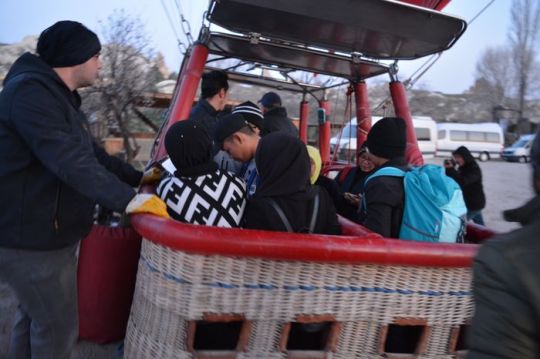
The Second Bulgarian Kingdom
Rise, Struggles, and Fall
Byzantine Domination (1014-1186)
Bulgaria endured Byzantine rule from 1014 to 1186. The Byzantine emperors imposed the Greek language on Bulgaria in an attempt to absorb it as a Byzantine province. However, the strong Bulgarian national identity resisted being overshadowed. Despite several uprisings, the Bulgarians remained under Byzantine control until 1186.
Liberation and Leadership of the Asen Brothers (1186)
In 1186, Bulgaria liberated itself from Byzantine rule under the leadership of brothers Peter and Ivan Asen. Peter became the king and prioritized reestablishing the independence of the Bulgarian church, restoring Bulgarian as the religious and literary language instead of Greek. Although Peter was killed in 1196 after a significant victory over the Greeks, his younger brother Ivan Asen, also known as Kaloyan, took the throne. Kaloyan continued the war against the Byzantines, achieving multiple victories and uniting all Bulgarian lands within the borders of the Second Bulgarian Kingdom City Tours Istanbul.
Ivan Asen II and Expansion (1218)
Ivan Asen II succeeded his father and continued the work of uniting the Bulgarian people. He expanded the country’s borders and achieved notable victories, including the defeat and capture of Teodor, the emperor of Epir, ruling over western Greece. Despite the fall of Byzantium to the Romans in 1204, the Bulgarians, after laying siege to the city, withdrew, believing the Romans posed a lesser threat than the Greeks.
Weakening Rule and Turkish Invasion (1331-1393)
Following Ivan Asen II, a series of weak rulers led the Second Bulgarian Kingdom. In 1331, Ivan Alexander came to power, ruling vigorously for thirty years, witnessing another period of greatness. However, after his passing, his three sons vied for succession, dividing the country and leading to its downfall at the hands of a new enemy, the Turks. In 1393, the Turks seized the capital, Tirnovo, marking the end of the Second Bulgarian Kingdom.
0 notes
Photo
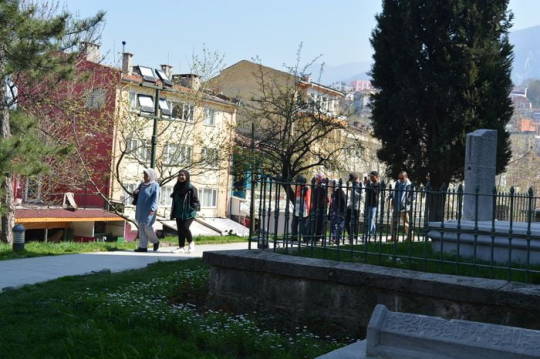
The Turmoil and Transition: Bulgaria in the Aftermath of World War I
Ferdinand’s Dilemma
As World War I drew to a close, King Ferdinand of Bulgaria found himself at the helm of a mutinous army and a nation on the brink of rebellion. Faced with internal unrest and external defeats, Ferdinand sought a change in government to navigate Bulgaria through the turbulent post-war period.
Malinov’s Leadership and Entente’s Blow
Prime Minister Malinov, leader of the Democratic Party, enjoyed favor in Paris and London. However, by September 1918, it was too late to salvage Bulgaria’s fortunes. The Bulgarian army suffered a significant defeat by the Entente forces in Macedonia, leading to a humiliating partial military occupation in Thessaloniki on September 29. Forced to disband its army, Ferdinand saw abdication as the only recourse and passed the throne to his first-born son, Boris, on October 3, 1918.
The Unfavorable Winds of Peace
Despite the change in leadership, Bulgaria faced an uncertain future at the peace conference. The Treaty of Neuilly, confirmed on November 27, 1919, delivered a severe blow by depriving Bulgaria of its access to the Aegean. This outcome marked the onset of a second national catastrophe, leaving the nation grappling with the repercussions of war and unfavorable diplomatic terms.
The Integrator
With King Boris III at the helm, Bulgaria entered a new era characterized by reconstruction and attempts at integration. Boris III, known as “The Integrator,” faced the formidable task of rebuilding a nation scarred by war and diplomatic setbacks Sightseeing Turkey.
Stamboliyski Regime: Coping with Crisis
The aftermath of the war brought about an economic crisis in Bulgaria, fueling discontent and resentment against parties perceived to have led the country into military conflicts. Alexander Stamboliyski, leader of the Agrarian Union party, assumed leadership, tasked with signing the Treaty of Neuilly. Stamboliyski’s regime grappled with strikes, inflation, and a ration system while navigating the challenges of post-war recovery.
A Nation in Flux
As Bulgaria transitioned from the tumultuous years of World War I, it faced internal and external challenges that shaped its trajectory in the interwar period. The reign of King Boris III and the Stamboliyski regime marked pivotal moments in Bulgaria’s efforts to rebuild, integrate, and find stability amidst the aftermath of a devastating war.
0 notes
Photo
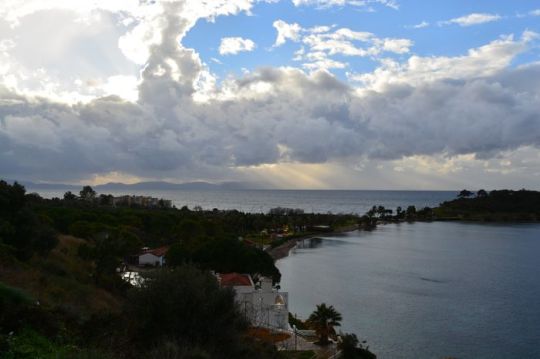
Countering Denial and Exposing the Unseen Atrocities
Debunking Disraeli The Steep Descent to Denial
In the face of Mr. Disraeli’s persistent denial, one cannot overlook the chilling accounts from Tamboli. Contrary to claims, sackfuls of heads were not just a macabre imagination but a gruesome reality. The Italian Consul, a witness to this horror, could unravel the steep descent of heads down a hill, revealing a brutal truth that refutes Disraeli’s assertions.
Novi-Selo’s Tragedy A Shocking Correction
Addressing Disraeli’s misattribution, the shocking reality of young girls burnt alive emerges not at Novi-Selo but at Batak. The numbers, far from the claimed 40, escalate to a devastating count of 200 girls, women, and children. Exposing this tragic correction reveals the gravity of the atrocities and highlights the dangerous consequences of downplaying such horrors.
Media’s Role Unveiling the True Culprits
While Disraeli places blame on correspondents, the real crime lies not in slightly misjudging numbers but in the mass atrocities committed. The focus should shift from quibbling over figures to exposing the undeniable truth of the slaughter of innocent lives. Unveiling the true culprits requires acknowledging the magnitude of the atrocities rather than deflecting blame onto those who dared to report them.
Crimes of Perception Dissecting Disraeli and Elliot’s Perspective
Disraeli and Sir Henry Elliot’s dismissal of reported numbers underscores a troubling perspective. Instead of grappling with the enormity of the crimes against humanity, they dwell on semantics and figures Bulgaria Holidays. Dissecting this warped perception reveals a disturbing prioritization of rhetoric over human lives, exposing the inadequacy of their response to the unfolding tragedies.
Beyond Denial A Call for Accountability
In conclusion, the narratives surrounding Bulgaria’s horrors demand a shift from denial to accountability. Tamboli’s grim descent of heads and Batak’s tragic toll are not exaggerated tales but harsh truths that cannot be obscured. Dismissing media as the culprit deflects attention from the real issue—the heinous crimes committed. It is time to move beyond denial, confront the harsh reality, and demand accountability for the atrocities that have scarred Bulgaria.
0 notes
Photo
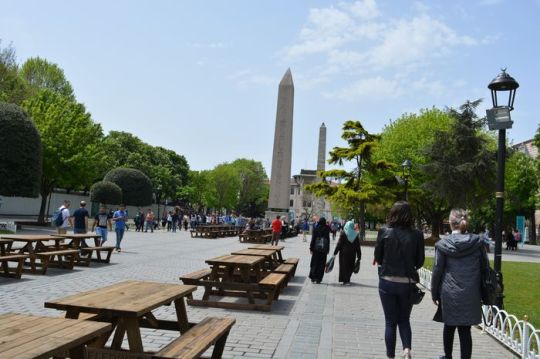
The Unimaginable Horror
Shells Rain on Perustitza’s Sanctuary
Perustitza’s chronicle of horror reached its zenith as the relentless bombardment of the churchyard escalated. The impact of shells exploding within the sacred confines, where only women and children sought refuge, defies the imagination. The sheer terror that unfolded when shells penetrated the high gable windows, tearing through the air with thunderous roars, transformed the once-sacred space into a nightmarish battleground. This pivotal moment demands reflection on the stark contrast between the stoic battlefield and the vulnerable sanctuary within, as the indiscriminate violence of war reached new depths.
The Shattered Calm Unraveling the End of Perustitza’s Siege
As the siege of Perustitza neared its conclusion, the fog of war obscured the details of its final moments. Saturday morning, the day after the devastating bombardment, emerged as a pivotal period marked by uncertainty and conflicting accounts. Piecing together the events proved challenging, as the village struggled to provide a clear and cohesive narrative.
The villagers recount the haunting presence of the Turks surrounding the besieged village throughout Friday. A climate of fear and dread permeated as Bashi-Bazouks lurked outside the gates, striking down anyone who dared to show themselves. The Bashi-Bazouks, often characterized by opportunistic and predatory tactics, preferred to exploit vulnerabilities rather than engage in direct confrontation. The villagers, trapped within the church, faced the grim reality that stepping outside meant confronting the brutal and unscrupulous forces awaiting them.
The bravery of the besieged villagers stood in stark contrast to the opportunistic nature of the Bashi-Bazouks. Despite the imminent threat Balkan Tours, the villagers held their ground, unwilling to succumb to the tactics of those who preyed on the defenseless. The day unfolded in a tense standoff, with the Bashi-Bazouks maintaining their vigil outside the gates.
However, as Saturday morning dawned, a pivotal shift occurred. The Bashi-Bazouks, known for their reluctance to engage directly without securing weapons through deceitful promises, withdrew from the scene. In their place, regular troops took positions, marking a change in the dynamics of the siege. The reasons behind this shift remain shrouded in uncertainty, and the villagers’ accounts vary, leaving a lingering sense of ambiguity about the conclusion of Perustitza’s harrowing ordeal.
The siege’s conclusion, while marking the end of a dark chapter, leaves lingering questions about the motivations and strategies of the assailants. Perustitza, now scarred by the echoes of violence, stands as a testament to the resilience of its inhabitants in the face of overwhelming adversity. The concluding moments of the siege underscore the complex interplay of forces, leaving an indelible mark on the village and a legacy of courage and endurance amid unimaginable horror.
0 notes
Photo
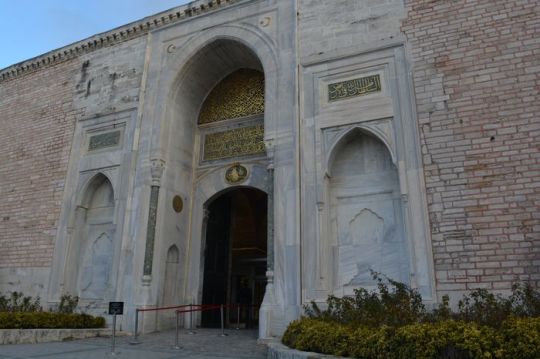
TURKISH ATROCITIES IN BULGARIA
Scattered over England and the whole of Europe, MacGahan’s reports contributed to create out of the April uprising a process testing the political and moral conscience of the epoch. In that above all else consists the supreme importance of these pages stained with blood.
THE TURKISH ATROCITIES IN BULGARIA
The Bulgarian Atrocities: “Daily News” Special Inquiry.
Philippopolis, July 28.
I arrived here three days ago on a mission of investigation. Philippopolis, it may be mentioned, is the principal town in that part of Bulgaria which was the scene of the exploits of the Bashi-Bazouks, and is therefore the best or rather the only point at which trustworthy information can be obtained respecting the atrocities now exciting so much indignation in Europe. I found that Mr. Baring had already arrived and commenced the work of investigation.
American Consul- General
Mr. Schuyler, the American Consul- General, likewise arrived, partly on a similar errand, partly to inquire into the advisability of establishing a vice-consulate, or taking other measures for the protection of a few American missionary families established throughout the country. The other consuls, I find, made reports to their respective Governments some time ago, and are now engaged in collecting further information relating to the insurrection City Tour Istanbul.
It is a curious fact that while the Austrian, Greek, Russian, and French Governments all have consuls in this place, who give minute and detailed reports of everything that happens here, the English Government, which one would think equally interested in receiving prompt and correct information, should have no agent at all. There is an English consul at Adrianople, a very worthy gentleman, but his health is so shattered that he is utterly unfit for service of any kind. It is therefore scarcely astonishing that the English Government should know less of what is passing in Turkey than other Governments, and far less than well-informed newspapers.
0 notes
Photo
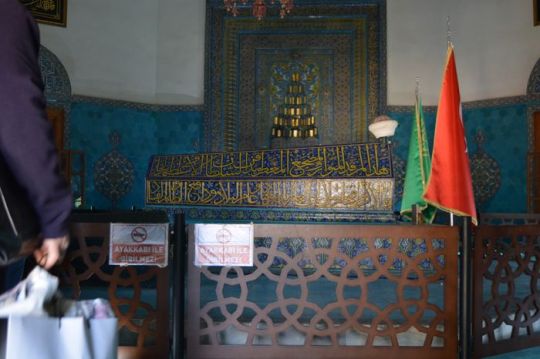
The village of Batak
The village of Batak was comparatively rich and prosperous; it had excited the envy and jealousy of its Turkish neighbours, and the opportunities of plunder offered a temptation to the Turks which, combined with their religious fanaticism and the pretext of an insurrection in another part of the country, was more than they could resist. The man Achmet-Agha, who commanded the slaughter, has not been punished, and will not be, but, on the contrary, he has been promoted to the rank of Yuzbashi, and decorated.
We are told that any number of children and young girls had been carried off; that it was known in what Turkish villages they were kept, and that the Turks simply refused to restore them to their parents. Mr. Schuyler afterwards obtained a list, with the names and ages of eighty-seven girls and boys that had been carried off with the name of the village in which each was kept.
As to the present condition of the people who are here, it is simply fearful to think of. The Turkish authorities have built a few wooden sheds in the outskirts of the village in which they sleep, but they have nothing to live upon but what they can beg or borrow from their neighbours.
Turkish authorities
And in addition to this the Turkish authorities, with that cool cynicism and utter disregard of European demands for which they are so distinguished, have ordered these people to pay their regular taxes and war contributions just as though nothing had happened. Ask the Porte about this at Constantinople, and it will be denied, with the most plausible protestations and the most reassuring promises that everything will be done to help the sufferers Private Tours Istanbul.
But everywhere the people of the burnt villages come to Mr. Schuyler with the same story—that unless they pay their taxes and war contributions they are threatened with expulsion from the nooks and corners of the crumbling walls where they have found a temporary shelter. It is simply impossible for them to pay, and what will be the result of these demands it is not easy to foretell. But the Government needs money badly, and must have it. Each village must make up its ordinary quota of taxes, and the living must pay for the dead.
0 notes
Photo

Monopolistic Historical Priorities
A yet too rare example of a balanced approach towards the Bulgarian past is what you will come upon in this book. There are no overstated exploits here but also there is no nihilistic self-denial. There are no complaints and threats towards what the others have done to us here but also there is no slavishness before them. There are no claims for monopolistic historical priorities here but also there is no underestimation of the contributions of the Bulgarian factor in the cultural and political foundations of Christian Europe. In this book you will get a glimpse of Bulgaria as build in and fit into the whole historical process on the continent – in which there are impetuous upsurges and continuous falls. That is, its real value! Here is a testimony that not only professional historians can write valuable history…
Andrey Pantev
In the heart of Sofia rise the remains of Roman public baths from the 2nd and 3rd c. .4. D., turned later (c. 4:h c. ) into the Church of St George Private Tours Balkan.
Inaugural Words by The Author
Herodotus was the father of history. Well, but in the V c. B. C. his task was easier as he had at disposal mainly materials on the Persian Wars. It is curious, would he be able to prove his fatherhood genetically if he got in our days when almost half of the literary heritage of mankind is connected more or less with history – from the most serious scientific works to queer improvisations or “disclosures” offered by low-grade novelists…
Historical writings that allude to the fate of even a single country constitute of piles of volumes today. But when it is spoken of a country like Bulgaria whose embryo is lost far behind in the millennia, and the aim of the author is to depict the historical course of events in just superficial strokes, then the task gets rather more complex. This one wrote in one way, the other belies to him, a third one refutes the rest… Having at disposal but a page or two for a whole century that is stuffed with events, one gets confused. And starts applying the method of rejecting: from here we take just the most substantial facts, from there just the most outstanding persons, and so on. Of course, personal attitude also says its say. The formulation of one historical author is being preferred to the one of another, the interpretation of a Renaissance architect sounds to you more decent than the one of an eminent contemporary. We cannot speak of any impartiality.
0 notes
Photo
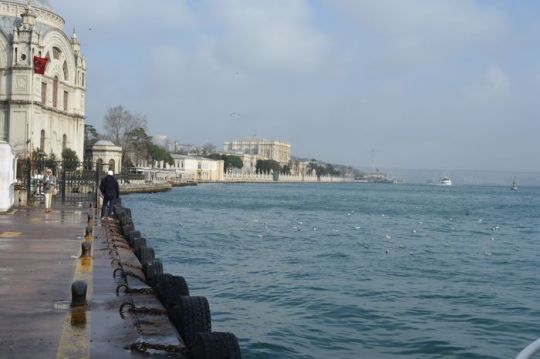
Sultan Muhammad V
The Sultan. — The present Sultan, H. I. M. Sultan Muhammad V., thirty-fifth Ottoman Sultan since the foundation of the Turkish Dynasty, and twenty-fifth of his line since the taking of Constantinople, was horn on the 3rd November 1844, and ascended the throne on the 28th April 1909. He is of a generous and very kindly disposition; he is the first real constitutional Sultan Turkey ever had, and is extremely popular among the people. Before he ascended the throne he was confined by his elder brother Sultan Abd-ul-Hamid Khan II. in the small low building which adjoins his present residence, the Volmah Baghcheh Palace.
People.—The population of Constantinople is a mixed one, composed chiefly of Turks, Greeks, Armenians, Levantines, as the half-breed descendants of Europeans are styled, and Jews.
The Turks, as their name implies, were originally of Turkoman descent; the race, however, is at present a very mixed one, owing to the continual introduction, through intermarriage, of the Arab and Circassian elements.
God will provide
The average Turk is of medium stature, with dark hair and an aquiline nose, and is noted for his punctilious politeness and hospitality, which latter he inherits from his nomadic ancestors, and for his indolence and apathy. This latter quality often stands him in good stead in the event of disaster or misfortune, which, like good fortune, he attributes to the will of God, or more often to Kismet (fate); he is in fact nothing if not a fatalist, and the Kismet of the Turk has become even more proverbial than his politeness and hospitality. This apathy, for it cannot be dignified by the name of stoicism, may be accountable for the comparative absence of suicide among the Turks, who console themselves for the greatest losses or mishaps, private or national, by piously ejaculating Kismet dir (‘ it is fate ’) guided istanbul tours, or Allah kerim (‘ God will provide ’). The Turk is extremely simple in his habits, frugal and sober, and on the whole may be said to be good- natured, easy-going, fairly truthful, and charitable; but is, on the other hand, extremely superstitious, and utterly destitute of any but the crudest artistic taste, and of any liking for the fine arts.
Even in his pleasures and pastimes his indolence and apathy assert themselves. His games are all of a sedentary nature, and he will sit for hours over a succession of games of backgammon. He never dances, all his appreciation of the Terpsichorean art being confined to viewing from his cushioned divan, through the fragrant mediums of coffee and cigarettes, the lascivious posturings and contortions of gipsy girls, performed to the accompaniment of monotonous, dirge-like strains.
The Turk’s favourite pastime is what he calls Keyeffy which is somewhat akin to the dolce far niente or sweet idleness of the Italian. This ‘ enjoyment ’ is attainable by repairing to some picturesque spot, and sitting for hours in listless, thoughtless, vacant contemplation, over the soothing coffee and cigarette. This is kcyeff downright, pure, unadulterated keyejf or whatever one likes to call it, for the word baffles all translation.
0 notes
Photo
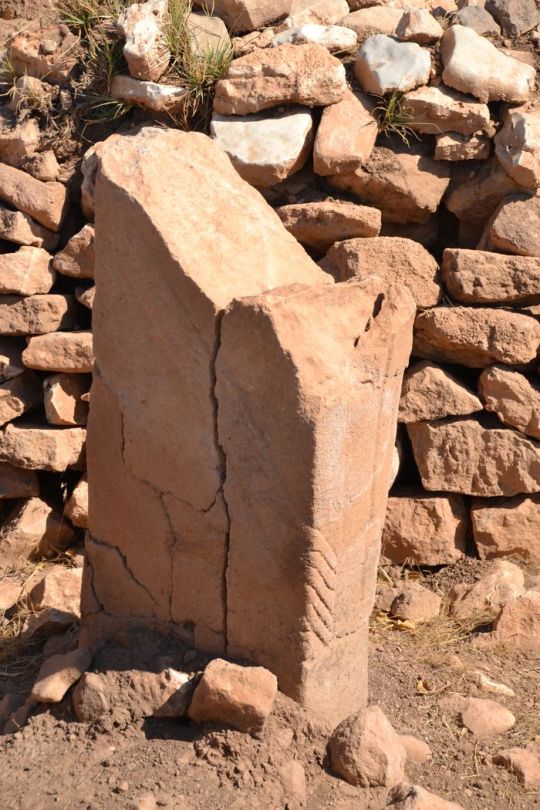
By the time of the Liberation
By the time of the Liberation, some fifty years later, there were twelve new churches in Plovdiv. Eight of them have survived on the Three Hills today in a comparatively good state of preservation. They are the St. Marina Metropolitan Church, the Holy Virgin Cathedral, the churches of the SS. Constantine and Helena, of Sveta Nedelya with its St. Presentation of the Virgin Chapel, of St. Nikola, St. Petka and St. Dimiter. The Armenian Apostolic Church of St. Kevork (St. George) built in 1828 should also be mentioned, as it is located within the Old Town.
The Revival Orthodox churches in the Old Town were created by some of the most outstanding figures of the Bulgarian schools of architecture, woodcarving and painting of that period. The construction work was commissioned to renowned masters of the Bratsigovo School. The iconostases were carved by masters of the illustrious Debar School of woodcarving and to masters from Metsovo in Epirus.
The iconography was executed by icon-painters of the Samokov and Adrianople Schools of painting and abounds in creations by such famous artists as Zahari Zograf, his elder brother Dimiter Zofraf and the latter’s son Stanislav Dospevski, by Nicola Odrinchanin and others. The major part of the Revival churches in Plovdiv belongs to the common at the time architectural type of the three-aisle pseudo-basilica. After the Crimean War (1853 -1856) when the restrictions imposed by the Ottoman authorities were suspended, the first bell-towers and domed basilicas appeared in Plovdiv travel bulgaria.
ST. MARINA METROPOLITAN CHURCH
Plovdiv Diocese and its ecclesiastical administration represented by the Plovdiv Orthodox Bishopric have a long history. They were established at the beginning of the New Era, as early as the middle of the 1st c. as a result of the evangelizing activity of Apostle Erm, who was sent to Thrace by Apostle Paul himself.The first Christian community in the Thracian lands appeared in Plovdiv. This explains why the ecclesiastical authority of the eparchy founded subsequently was set up here. For centuries on end the seat of the eparchy – the Plovdiv Orthodox Bishopric was housed below the rocky southern slopes of Taxim Tepe. In mediaeval times, even before the Ottoman invasion, the metropolitan church was devoted to the martyr St. Marina.
The temple was demolished and rebuilt on numerous occasions. In 1851 it had to be raised from its very foundations. At that time some of the restrictions on the construction of Christian churches were suspended, and it was possible to erect a much more imposing and befitting temple. The church was built by masters headed by Nicola Tomchev-Ustabashiiski of the Bratsigovo School of construction, a man known far beyond the boundaries of Thrace. The temple is designed in the style of the spacious and imposing pseudo-basilicas of the Revival Period. Inside, seven pairs of slender columns crowned by a polyhedral dome divide it into three aisles. To add to the solemn effect, a colonnade encircles the narthex on the western side.
0 notes
Photo
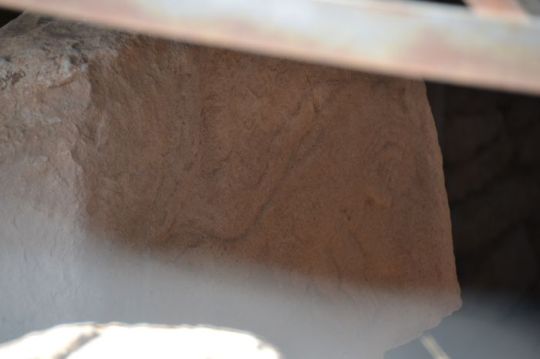
The ancient theatre
The cultural life of the city is very rich. Plovdiv has a phil-harmonic orchestra, a puppet theatre and an opera company, as well as a drama theatre. There are several higher educational establishments in the town for medicine, food industry, agriculture, music, research institutes, English and Bulgarian language schools and the Paissi of Hilendar University. There is an Archaeology Museum, a National Revival Museum, a Museum of the Workers’ and Revolutionary Movement, art gallery, etc.
Tourist attractions
The old part of the town, the Three Hills, is an architectural reserve. In Roman times the Three Hills were known as Trimontium; few cities in Bulgaria have such picturesque spots from the National Revival Period. On both sides of the cobbled narrow streets rise the walls of old National Revival houses, painted facades, bay windows and vaults, eaves curved like yokes, solid wooden nail-studded gates, grassed courtyards, stone wells. A big granary from the Roman times was discovered on Nebet tepe hill. The fortress walls were destroyed and restored again and again during Roman and Byzantine times, and later under the Bulgarians. The eastern gate of the fortress, Hissar kapiya, was rebuilt and repaired several times private tours istanbul, as was the Round Tower to its southeast.
One of the major recent archaeological finds is the Ancient Theatre (2nd century) discovered in the Old town. It has been restored and now carries out its former functions. An ancient stadium was discovered in the main street which complements it.
The Argir Koyumdjioglou House on the eastern slope of Nebet Tepe hill, built 1847, is typical of Plovdiv symmetrical houses. It holds the Ethnographic Museum. An international chamber music festival is held in the museum’s courtyard each September.
The Georgiadi House east of Hissar Kapiya was built in 1846. It has a picturesque facade with bay windows and yokelike eaves. It houses the Museum of the National Revival and of the National Liberation Struggles.
The Alphonse de Lamartine Museum, built in 1829-1830. It is also a typical Plovdiv symmetrical house. The famous French poet Lamartine lived here in 1833 after his return from the Orient.
I he St Constantine and Elena Church, built 1832 on the remains of an older church. The belfry has five storeys. The gilded iconostasis is in early Baroque style and was made by the Debur engraver Ivan Pashkoula. Many of the icons were painted by Zahari Zograph in 1836.
The St Marina Church built 1852-1853 on the southwestern part of Taxim Tepe hill. It was the main episcopal church. The woodcarvings of the iconostasis, the pulpit and the bishop’s throne are particularly valuable. The holy gates feature scenes from the life of St George and St Dimiter, Adam and Eve and Samson Killing the Lion. The icons were painted by Stanislav Dospevski.
0 notes
Photo

S0FIA STANKE DIMITROV RILA MONASTERY
S0FIA-STANKE DIMITROV-RILA MONASTERY- BLAGOEVGRAD-SANDANSKI-MELNIK (181 KM)
Starting from the south-western Sofia (part of the E-79 international motorway) — via the Knyazhevo suburb, drive along the Vladaya Gorge. To the left you will see an impressive monument commemorating the Soldiers’ Mutiny at the end of World War I (autumn 1918) when influenced by the October Revolution, soldiers left the front for Sofia to overthrow the monarchy.
The road forks after about 30 km. To the right is the road to Pernik (population 90,000) — a large mining and industrial centre. On the west side of the town rise the high terraces of the local park. Here once stood a medieval fortress of Krakra of Pernik, a Bulgarian feudal ruler from the second half of the 10th century. Hotel Strouma has 26 single rooms, 111 double rooms and 2 suites, restaurant, bar, coffee-shop and hairdressers’ salon. The next town is Stanke Dimitrov (population 43 000) situated on the banks of the Djerman River at the foot of the Rila Mountains. This area was inhabited in ancient times by Thracian tribes. During the Middle Ages several for-tresses stood here, but were destroyed by the Ottoman invaders.
After Bulgaria fell under Ottoman rule, the settlement developed as a centre of crafts and stockbreeding. After Bulgaria’s liberation from Ottoman domination in 1878, tobacco
growing was developed and the town grew rapidly. Doupnitsa, as the town was then called, was the birth place of an outstanding figure in the Bulgarian Communist Party, Stanke Dimitrov (1899-1944), whose name the town bears today.
Stanke Dimitrov
During the years of popular rule, Stanke Dimitrov developed and is now one of the country’s largest tobacco-producing centres.
Points of interest are the local museum, the old clock tower dating from the end of the 17th century and the Stanke Dimitrov Museum Hotel Rila — (two star), has 14 single rooms, 94 double rooms and 2 suites tours sofia, restaurant, bar, coffee- shop, information desk and souvenir stand. There are filling stations and a repair service station.
A road branches off to the right from Stanke Dimitrov and leads to Kyustendil (population 51,000). Kyustendil dates back thousands of years and is one of the oldest towns in Bulgaria. The Roman conquered it in 46 A.D. and developed it further to their own needs. They named the place ‘a town of springs’. Pautalia grew rapidly in the 3rd century A.D. and became a large trading centre. Lying between Macedonia and Serdica (Sofia), Pautalia’s warm mineral springs and its mild, almost Mediterranean climate turned it into an important spa. According to historical data, the Roman Emperor Ulpia Trajan (98-117) suffered from a skin disease which was cured there.
As a token of gratitude to the God of medicine, Ascelius, he named the town Ulpia Pautalia and contributed to its further developmeat In the 11th century, the town was known as Velbuzhd, and in the 15th century, as Konstantinilli, after the ruler of that time, Konstantin Dragash. Eventually it came to be known as Kyustendil and is today a modem town and a major fruit-growing centre. However, Kyustendil is best known for its mineral water whose temperature is as high as 74°C. It is rich in sulphates and hydrogen sulphates and has various curative properties. There is a modem hydropathic medical centre and therapy includes mud treatment, paraffin wraps, etc. The waters are recommended for treatment of chronic inflammation and generative diseases of the joints, diseases of the peripheral nervous system and the spinal cord, chronic gynaecological disorders, stenlity, chronic intoxication from metals such as lead, bismuth and mercury.
0 notes